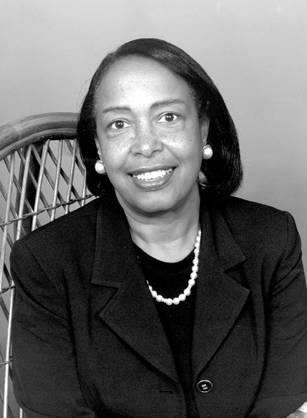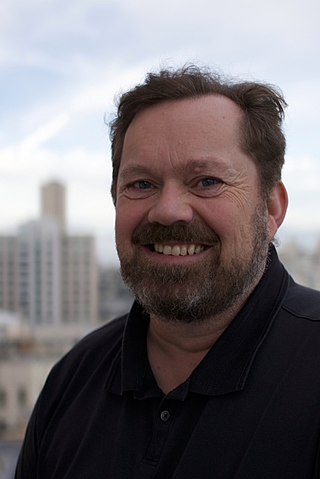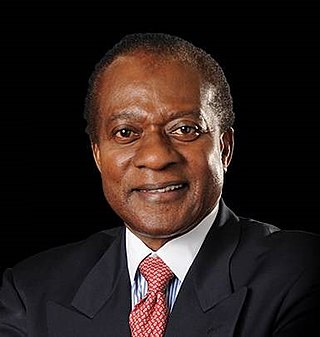
A telephone is a telecommunications device that permits two or more users to conduct a conversation when they are too far apart to be easily heard directly. A telephone converts sound, typically and most efficiently the human voice, into electronic signals that are transmitted via cables and other communication channels to another telephone which reproduces the sound to the receiving user. The term is derived from Greek: τῆλε and φωνή, together meaning distant voice. A common short form of the term is phone, which came into use early in the telephone's history. Nowadays, phones are almost always in the form of smartphones or mobile phones, due to technological convergence.
Voice over Internet Protocol (VoIP), also called IP telephony, is a method and group of technologies for voice calls for the delivery of voice communication sessions over Internet Protocol (IP) networks, such as the Internet.
Vonage is an American cloud communications provider operating as a subsidiary of Ericsson. Headquartered in Holmdel Township, New Jersey, the organization was founded in 1998 as Min-X as a provider of residential telecommunications services based on voice over Internet Protocol (VoIP). In 2001, the organization changed its name to Vonage.

Gary K. Michelson is an American orthopedic surgeon, medical inventor, and billionaire philanthropist.

Alon Cohen is the co-founder of VocalTec Inc. (1989) and the co-inventor of the Audio Transceiver that enabled the creation of Voice Over Networks products and eventually the VoIP industry. Cohen holds four US patents on different communications technologies. He is currently Executive VP and CTO at Phone.com.

Radia Joy Perlman is an American computer programmer and network engineer. She is a major figure in assembling the networks and technology to enable what we now know as the internet. She is most famous for her invention of the Spanning Tree Protocol (STP), which is fundamental to the operation of network bridges, while working for Digital Equipment Corporation, thus earning her nickname "Mother of the Internet". Her innovations have made a huge impact on how networks self-organize and move data. She also made large contributions to many other areas of network design and standardization: for example, enabling today's link-state routing protocols, to be more robust, scalable, and easy to manage.

Patricia Era Bath was an American ophthalmologist and humanitarian. She became the first female member of the Jules Stein Eye Institute, the first woman to lead a post-graduate training program in ophthalmology, and the first woman elected to the honorary staff of the UCLA Medical Center. Bath was the first African-American to serve as a resident in ophthalmology at New York University. She was also the first African-American woman to serve on staff as a surgeon at the UCLA Medical Center. Bath was the first African-American woman doctor to receive a patent for a medical purpose. A holder of five patents, she founded the non-profit American Institute for the Prevention of Blindness in Washington, D.C.

Helen Augusta Blanchard was an American inventor who received 28 patents between 1873 and 1915. She was known for her numerous inventions dealing with sewing machines and sewing technology.

Edith Marie Flanigen is a noted American chemist, known for her work on synthesis of emeralds, and later zeolites for molecular sieves at Union Carbide.

Ribbit was a telecommunications company based in Mountain View, California. It was acquired by BT Group on July 29, 2008 for $105 million.
Bernard Silver was an early developer of barcode technology alongside Norman Joseph Woodland.

Danny Cohen was an Israeli American computer scientist specializing in computer networking. He was involved in the ARPAnet project and helped develop various fundamental applications for the Internet. He was one of the key figures behind the separation of TCP and IP ; this allowed the later creation of UDP.

Eslambolchi, Hossein is an Iranian-American innovator, theoretical and experimental physicist, engineer, and author, best known for his prominent role in AT&T, very popular blogs on Linkedin, besides being one of the top 10 most prolific and exceptional inventor with over 1400+ patents List of Prolific Inventors. Eslambolchi has also a doctorate degree in neuroscience as well. achieved in June 2022. He joined AT&T Bell Laboratories in 1986, and rose to become, in 2005, both global chief technology and information officer for AT&T. He became an officer of the company in 2003, as well as a member of AT&T's governing executive committee and became AT&T chief technology officer, AT&T chief information officer, president, and CEO of AT&T Labs, president and CEO of AT&T global network operations. Eslambolchi was assigned by AT&T as chief transformation officer responsible for moving ATT from a voice-based company to an IP-Software-based company in less than three years. He left AT&T soon after its takeover by SBC in 2006. And For his doctorate degree, Eslambolchi invented the concept of beam forming being used today in advanced 5G mobile systems along with ultrasound technology being used in medical applications worldwide. In addition, after leaving ATT, Eslambolchi started his medical degree in neuroscience and graduated specializing in both neurodegenerative diseases of the brain along with spinal cord injuries using stem cell technology in order to heal patients and even prevent these diseases via therapeutic medications in near future. Eslambolchi is recognized as one of the best neurosurgeon across the globe.
Evelyn Berezin was an American computer designer of the first computer-driven word processor. She also worked on computer-controlled systems for airline reservations.

Jens Eilstrup Rasmussen is a Danish software engineer, technology executive, and co-founder of Where 2 Technologies which led to Google Maps.
Jennie Hwang is an international businesswoman, entrepreneur, engineer, scientist, author, and speaker. She is the national president of the Surface Mount Technology Association, head of H-Technologies Group and the first woman to receive a PhD from Case Western Reserve University in Materials Science and Engineering.
Aran Safir was an American ophthalmologist and inventor. He is known for inventing a groundbreaking iris recognition scanner. This technology has been widely adopted in the security sector, ranging from the U.S. Department of Homeland Security to Google. The invention was patented on February 3, 1987, and expired in the United States in 2005. Safir and his co-inventor, Leonard Flom, were inducted into the National Inventors Hall of Fame in 2013.
Rhonda Childress is an IBM Fellow Vice President of GTS. She has earned the title of being the first Services woman to be called an IBM Master Inventor, Security Fellow, and the first Fellow from a predominantly African-American college from spending her whole career in SO. She was also the first IBM fellow from a Historical Black University. Childress is a prolific inventor with over 200 patents, 130 of which are related to the management of systems, cyber security, mobile, aircraft, and IoT. In 2018, she was inducted into the WITI Hall of Fame for her efforts in her career at IBM. Childress is one of 25 female IBM fellow in IBM's history.

Victor B. Lawrence is a Ghanaian-American engineer credited with seminal contributions in digital signal processing for multimedia communications. During his 30-plus-year tenure at Bell Laboratories, Dr. Lawrence made extensive and fundamental personal contributions to voice, data, audio and video communications. He led numerous projects that significantly improved or enhanced every phase in the evolution of early low-speed and today's high-speed data communications. He is a Research Professor and Director of the Center for Intelligent Networked Systems (iNetS) at Stevens Institute of Technology, where he also served as Associate Dean. He was inducted into the National Inventors Hall of Fame in 2016. He is a Member of the National Academy of Engineering, a Fellow of the IEEE for contributions to the understanding of quantization effects in digital signal processors and the applications of digital signal processing to data communications, a Fellow of AT&T Bell Labs, and a Charter Fellow of the National Academy of Inventors.
Sylvia Blankenship is an American horticulturalist and inventor. She is an emeritus professor at North Carolina State University. She identified 1-methylcyclopropene, a compound which extends the storage life of fruits. Blakenship was inducted into the National Inventors Hall of Fame in 2020.














